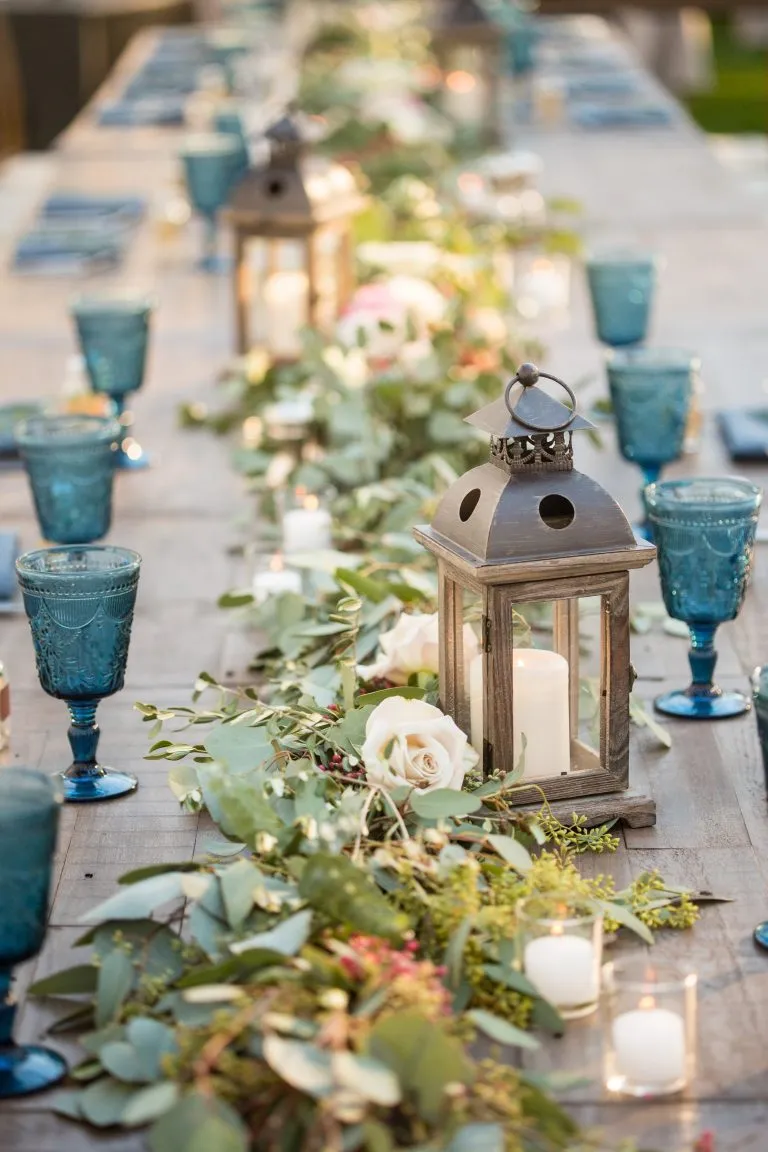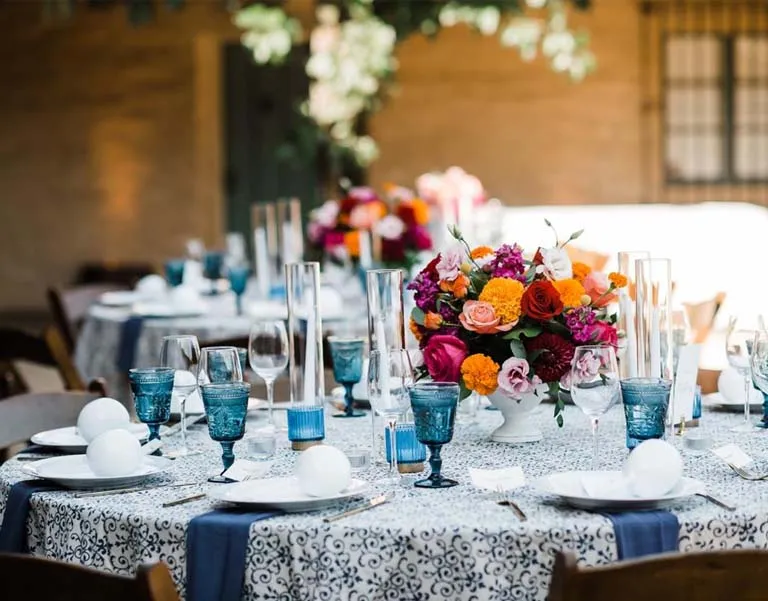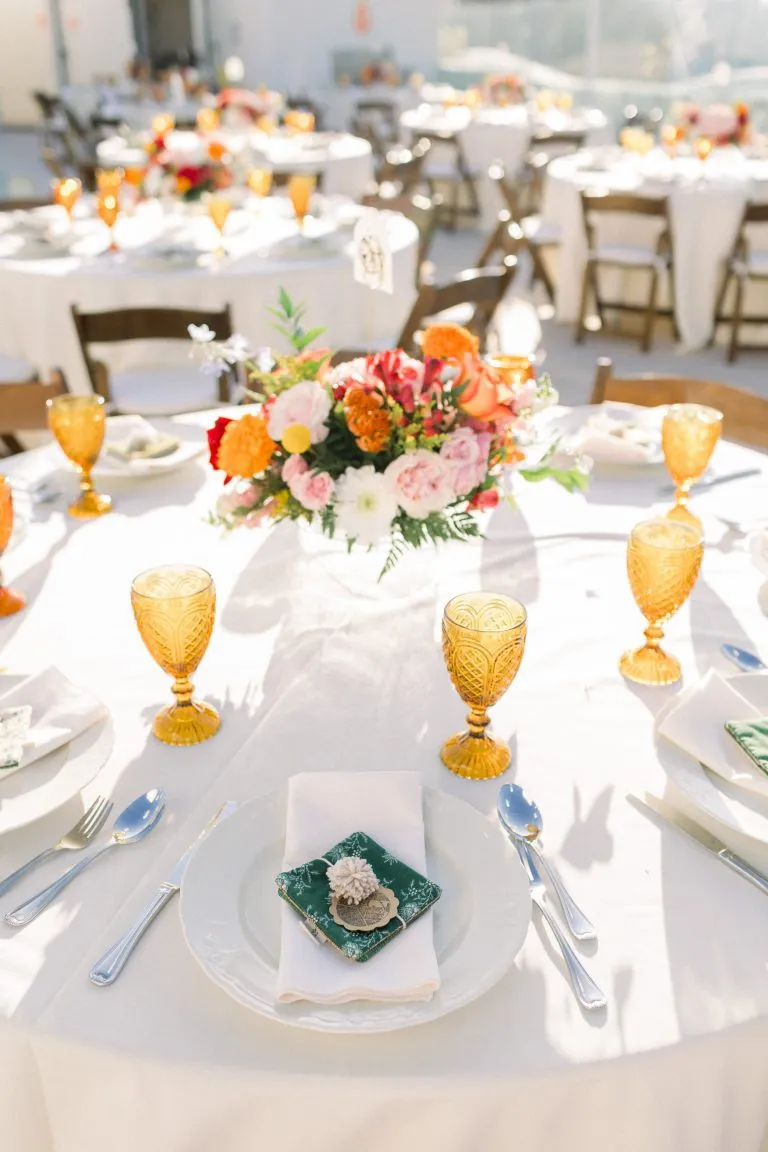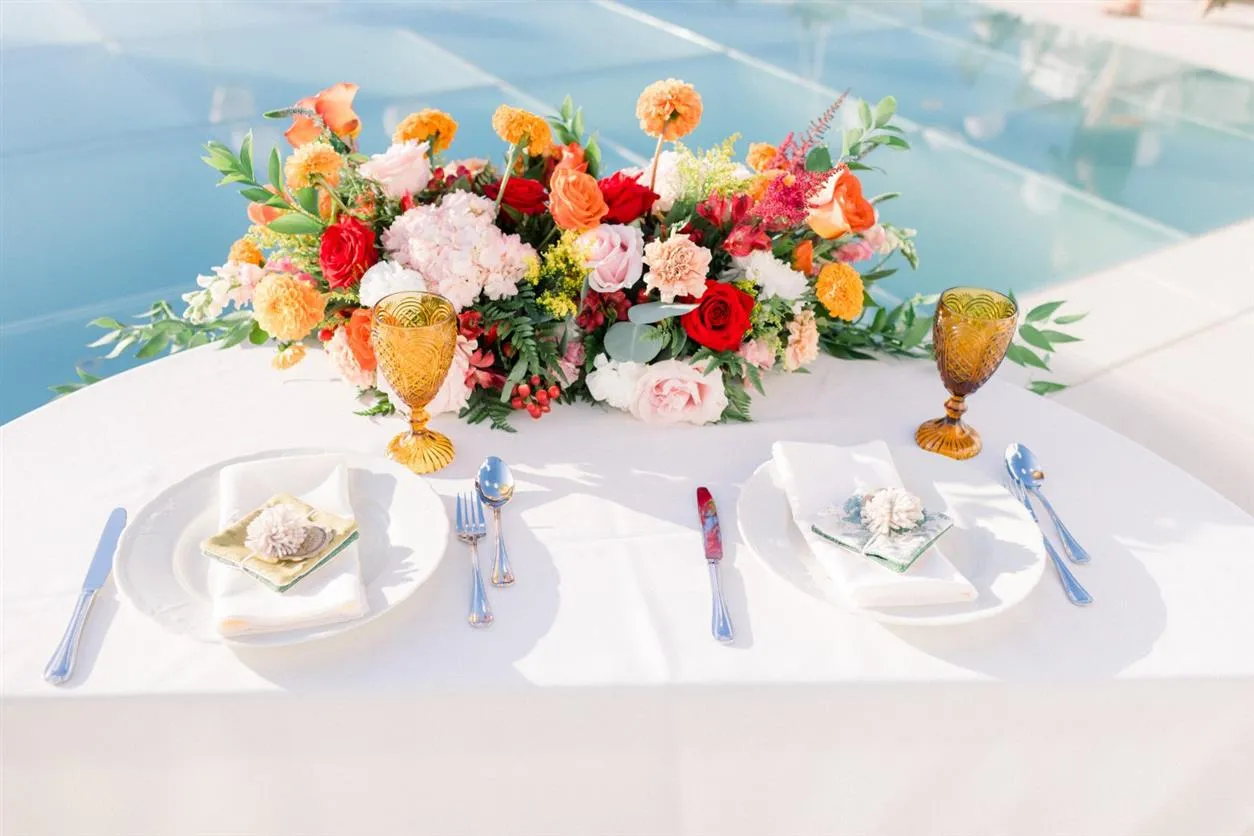Key Takeaways
- Matching tableware and glassware enhances dining experiences by combining functionality and aesthetics
- Color coordination and pattern harmonization create visually appealing and cohesive table settings
- Material quality affects durability and elegance, influencing the overall dining atmosphere
- Incorporating seasonal elements adapts table settings to different times of the year
- Strategic arrangement and layering of tableware and linens optimize space and add sophistication
Understand the Basics of Tableware and Glassware Matching

Mastering tableware and glassware matching enhances the dining experience. This section covers essential types of tableware, from plates to napkins, and explores glassware varieties for different beverages, including white wine and martini glasses. Understanding the functional and aesthetic roles of each element is crucial for creating an impressive table setting that complements interior design.
Identify Different Types of Tableware
Tableware encompasses a variety of essential items that contribute to an elegant dining experience. From classic dinner plates to vintage-inspired serving platters, each piece plays a crucial role in setting the stage for a memorable meal. Event planners can use a cart to transport and arrange different types of tableware, including glasses and decanters, ensuring efficient setup and a cohesive look.
Explore Varieties of Glassware
Glassware comes in various shapes and sizes, each designed for specific purposes. Crystal wine glasses enhance the aroma and flavor of fine wines, while ceramic mugs are perfect for hot beverages. Event planners should consider the type of drinks served when selecting glassware. For example, champagne flutes are ideal for sparkling wines, while wide-bowled glasses suit red wines. Butter dishes and other tableware can complement the chosen glassware to create a cohesive look:
| Glassware Type | Best Used For | Complementary Tableware |
|---|---|---|
| Crystal Wine Glass | Red and White Wines | Fine China Plates |
| Champagne Flute | Sparkling Wines | Silver Butter Dish |
| Ceramic Mug | Coffee and Tea | Stoneware Saucers |
Recognize Functional and Aesthetic Roles
Tableware and glassware serve both functional and aesthetic purposes in creating an elegant dining experience. The cup, whether for coffee or tea, plays a crucial role in beverage service, while linen napkins add a touch of sophistication. Different styles of glassware, such as those for red wine or beer, not only enhance the flavor of drinks but also contribute to the overall visual appeal of the table setting.
Consider Color Schemes for a Cohesive Look

Selecting the right color scheme is crucial for creating a cohesive and elegant table setting. This section explores how to choose complementary color palettes, balance bold and neutral tones, and utilize textures to enhance visual appeal. From baby shower decor to cocktail glasses, thoughtful color coordination can elevate any dining experience, whether it’s a casual coffee gathering or a formal dinner party.
Choose Complementary Color Palettes
Selecting complementary color palettes is essential for creating a harmonious table setting. Event planners can combine classic white china with gold-rimmed wine glasses for an elegant look, or pair vibrant blue mugs with matching napkin rings for a more casual tea service. When choosing colors, consider the overall theme and atmosphere of the event:
- Formal dinners: Opt for traditional combinations like white and silver
- Rustic gatherings: Incorporate earthy tones with wooden elements
- Modern events: Experiment with bold color contrasts and sleek designs
Balance Bold and Neutral Tones
Balancing bold and neutral tones creates visual interest in table settings. Event planners can pair a vibrant tablecloth with neutral bowls or mugs to highlight current trends. Alternatively, they might use neutral candles as accents against bold-colored plates, creating a striking contrast that draws the eye without overwhelming the senses.
Utilize Textures to Enhance Visual Appeal
Texture plays a crucial role in enhancing the visual appeal of table settings. Event planners can incorporate various textures to create depth and interest, such as pairing smooth champagne glasses with cork coasters or adding textured Easter-themed napkins to plain place settings. By combining different materials and finishes, like matte and glossy surfaces, planners can create a visually engaging tablescape that invites guests to explore and appreciate the details. When selecting textured elements, it’s important to consider the overall price point and ensure that each item adds value to the dining experience:
- Mix smooth glassware with textured placemats
- Use embossed charger plates under smooth dinner plates
- Incorporate woven table runners with sleek flatware
- Pair rough-hewn wooden serving boards with delicate china
Select Patterns That Harmonize
Harmonizing patterns in tableware and glassware creates a cohesive dining experience. Event planners can mix and match patterns thoughtfully, use solids to balance busy designs, and align style themes for a unified look. From porcelain plates to plastic salad bowls, carefully selected patterns enhance the kitchen-to-table aesthetic. Coordinating patterns across cake stands and serving pieces ensures a visually appealing and harmonious table setting.
Mix and Match Patterns Thoughtfully
Event planners can create visually striking table settings by thoughtfully mixing and matching patterns. By carefully selecting complementary styles and colors, they can curate an inventory of tableware that offers versatility for various meal types. A well-balanced view of pattern combinations enhances the dining experience, allowing guests to appreciate the artful arrangement of plates, glasses, and linens.
Use Solids to Balance Busy Designs
Solid-colored tableware provides a perfect balance for busy patterns in elegant table settings. Event planners can use plain white plates or champagne flutes to offset intricate leaf designs on serving platters or cocktail glasses. This approach creates visual harmony and prevents overwhelming guests with too many competing patterns. When selecting solid pieces, planners should consider dishwasher-safe options for practicality, ensuring that even the simplest spoon complements the overall aesthetic:
- Use white dinner plates to showcase patterned appetizer dishes
- Pair solid-colored napkins with ornate tablecloths
- Choose plain glassware to complement decorative charger plates
- Incorporate solid serving utensils with patterned serving bowls
Align Style Themes for a Unified Experience
Aligning style themes creates a unified dining experience, harmonizing colors, patterns, and materials across tableware and glassware. Event planners can select a cohesive theme, such as coastal or holiday, to guide their choices for everything from dinner plates to drink bottles. By coordinating colors and motifs, they ensure that each element, from the centerpiece to the stemware, contributes to a cohesive aesthetic. This approach enhances the overall ambiance and makes a lasting impression on guests:
| Theme | Colors | Tableware | Glassware |
|---|---|---|---|
| Coastal | Blue, White, Sand | Shell-shaped plates | Wave-etched tumblers |
| Holiday | Red, Green, Gold | Pine-patterned chargers | Frosted wine glasses |
| Modern | Black, White, Silver | Geometric platters | Sleek champagne flutes |
Pay Attention to Material Quality

Material quality plays a crucial role in creating elegant table settings. This section explores the benefits of different materials, evaluates durability and elegance, and guides matching materials with dining themes. Understanding these aspects helps event planners select tableware and glassware that enhance the dining experience while meeting practical needs.
Understand the Benefits of Different Materials
Different materials offer unique benefits for tableware and glassware, enhancing both functionality and aesthetics. Porcelain provides elegance and durability, making it ideal for formal dining. Stainless steel flatware resists corrosion and maintains its shine, while crystal glassware adds sparkle and refinement to table settings. Event planners can select materials based on the event’s formality, durability requirements, and overall theme to create the perfect ambiance.
Evaluate Durability and Elegance
Event planners must carefully evaluate the durability and elegance of tableware and glassware to ensure a successful dining experience. They should consider factors such as chip resistance, thermal shock resistance, and overall quality when selecting materials. By balancing these aspects, planners can create stunning table settings that withstand the rigors of frequent use while maintaining a sophisticated appearance. Key considerations include:
- Material strength and longevity
- Resistance to scratches and stains
- Ease of cleaning and maintenance
- Visual appeal and texture
- Suitability for different types of events
Match Material With the Dining Theme
Event planners can elevate dining experiences by matching materials with specific themes. They might choose wooden chargers and earthenware plates for rustic gatherings to create a warm, natural ambiance. Elegant soirées call for fine china and crystal stemware, while modern events benefit from sleek stainless steel and minimalist glass designs. By carefully selecting materials that align with the event’s atmosphere, planners ensure a cohesive and visually appealing table setting that enhances the overall dining experience.
Incorporate Seasonal Elements

Incorporating seasonal elements into tableware and glassware selections enhances elegant dining experiences. Event planners can adapt their choices to reflect different seasons, include seasonal colors and themes, and use seasonal decor to elevate the ambiance. By aligning tableware with the time of year, planners create memorable and visually appealing table settings that resonate with guests and complement the overall event atmosphere.
Adapt Tableware and Glassware for Different Seasons
Event planners can adapt tableware and glassware choices to reflect different seasons, creating a harmonious dining experience. For spring events, they might select pastel-colored plates and floral-patterned glassware. Summer gatherings call for bright, vibrant tableware and lightweight glasses suitable for outdoor use. As autumn approaches, planners can incorporate warm, earthy tones and textured glassware. Winter events benefit from rich, deep colors and elegant crystal stemware. By aligning tableware with seasonal themes, planners enhance the overall ambiance and create memorable dining experiences:
- Spring: Pastel plates, floral glassware
- Summer: Bright colors, lightweight glasses
- Autumn: Earthy tones, textured glassware
- Winter: Rich colors, crystal stemware
Include Seasonal Colors and Themes
Event planners can enhance dining experiences by incorporating seasonal colors and themes into their tableware and glassware selections. For example, they might choose warm oranges and deep reds for autumn place settings or cool blues and crisp whites for winter table designs. By aligning color palettes and motifs with the current season, planners create immersive atmospheres that resonate with guests and complement the event’s overall theme.
Use Seasonal Decor to Enhance the Experience
Event planners can elevate dining experiences by incorporating seasonal decor into their tableware and glassware selections. They might add autumn leaves or pinecones as centerpieces for fall gatherings, or use snowflake-adorned napkin rings for winter events. By carefully selecting seasonal elements that complement the chosen tableware, planners create immersive atmospheres that delight guests and enhance the overall dining experience.
Create a Layered Table Setting
Creating a layered table setting enhances the elegance of dining experiences. This section explores strategic tableware arrangement, space optimization for utensils and glassware, and the use of linens to add sophistication. Event planners can apply these techniques to craft visually appealing and functional table settings that impress guests and elevate the overall dining atmosphere.
Arrange Tableware Strategically
Event planners can create visually appealing and functional table settings by arranging tableware strategically. They should start with a charger plate as the base, followed by dinner plates, salad plates, and soup bowls. Utensils are placed in order of use, from the outside inward, while glassware is positioned above the knife blades. This systematic approach ensures a balanced and elegant presentation, making it easy for guests to navigate their place settings:
| Layer | Item | Position |
|---|---|---|
| 1 | Charger Plate | Center of place setting |
| 2 | Dinner Plate | On top of charger |
| 3 | Salad Plate | On top of dinner plate |
| 4 | Soup Bowl | On top of salad plate |
Optimize Space for Utensils and Glassware
Event planners can optimize space for utensils and glassware by arranging them strategically around the place setting. They should place forks to the left of the plate, knives and spoons to the right, and align glassware above the knives in a diagonal or triangular formation. This efficient layout ensures easy access for diners while maintaining an elegant appearance. Planners can further enhance the arrangement by considering the following tips:
- Position water glasses directly above the knife
- Arrange wine glasses to the right of water glasses
- Place dessert utensils horizontally above the plate
- Use tiered stands for appetizer plates to save table space
- Incorporate napkin rings to keep linens neatly folded
Layer With Linens for Added Elegance
Event planners can enhance table settings by layering with linens, adding elegance and sophistication to dining experiences. They can start with a crisp tablecloth as the foundation, followed by coordinating placemats and napkins. Runners and overlays provide additional texture and color, creating visual interest across the table. By carefully selecting and combining linens, planners can elevate the overall aesthetic and create a luxurious atmosphere for guests:
- Choose high-quality fabrics like linen, cotton, or silk
- Coordinate colors and patterns with tableware and glassware
- Use napkin rings or creative folds for added visual appeal
- Layer different textures to create depth and interest
- Consider seasonal themes when selecting linen colors and patterns
Conclusion
Mastering the art of matching tableware and glassware elevates dining experiences, creating visually stunning and cohesive table settings. By understanding the basics, considering color schemes, selecting harmonious patterns, and paying attention to material quality, event planners can craft elegant and memorable tablescapes. Incorporating seasonal elements and creating layered settings further enhance the overall ambiance, ensuring each dining occasion is tailored to impress. Ultimately, these essential tips empower event professionals to transform ordinary meals into extraordinary experiences, leaving lasting impressions on guests and showcasing their expertise in event design and execution.






